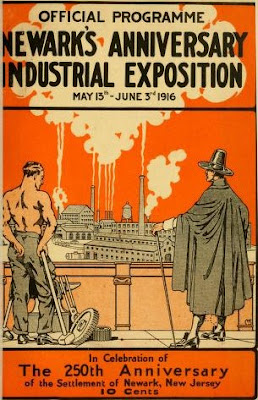In 1936, Rose Winterfeld filed for divorce from her husband, George Schoenberg, in Hudson County, New Jersey. The reason for the divorce was abandonment after only three months of marriage. She wrote that she had no knowledge of his whereabouts.
Ninety years later, could we find out what became of George, using records that may not have been available to Rose? Yes!
George Schoenberg and Rose Winterfeld married in Hoboken on December 7, 1926. He was 21 years old and resided at 175 Coles Street in Jersey City. She was 20 years old and resided at 212 Seventh Street in Hoboken.
 |
| Marriage record 1926 George Schoenberg and Rose Winterfeld |
In the 1930 federal census records, Rose and George were not living together as a married couple.
Rose was enumerated in Hoboken with her mother and siblings. She was working as a stenographer for an insurance agent. Her marital status was single.
 |
| 1930 federal census Rosie Winterfeld, single, age 23 living in Hoboken with her mother, Fannie, and siblings |
Like Rose, George returned to his family of origin. In 1930, he was listed in Jersey City in the household of his father, Simon Schoenberg, and step-mother, Clara Blumenfeld. Also residing here was his brother, Samuel. George's occupation was a salesman; Samuel's was "display art."
In 1936, Rose filed for divorce from George. She wrote that George left her after only a few months of marriage and that she did not know where he was.
 |
| Divorce complaint 1936 |
 |
| 1937 marriage record William Kaub and Rose Winterfeld Hoboken, New Jersey |
Rose died in Florida in 1987. William Kaub died in 1961 in New Jersey.
Where was George Schoenberg, the estranged and missing first husband of Rose, when Rose sought a divorce in 1936?
George was 350 miles west in Pittsburgh with a new family.
In the 1940 federal census, George was married to Lillian Levey. They lived in Pittsburgh, Allegheny County, Pennsylvania, with their two daughters, Ronella, age 6, and Judith, age 1. The older daughter was born before George was divorced from Rose.
 |
| 1940 United States Federal Census. Pittsburgh, Allegheny County, Pennsylvania. George Schoenberg was employed as an insurance agent. |
A few months later, a legal notice in the Pittsburgh Press served to notify George that Lillian had filed for divorce.
George returned to his father's home in Jersey City, which is where he registered for the World War II draft on October 16, 1940.
 |
| Draft registration card World War II for George Schoenberg Resided at 175 Coles Street, Jersey City, Hudson County, New Jersey Born July 16, 1907 in New York. Employed by A S Beck Shoe Company. |
In 1945, Corporal George Schoenberg married Lelia Fritz in Atlantic City, Atlantic County, New Jersey. His occupation was salesman and he was divorced once.
 |
| 1945 marriage record Corporal George Schoenberg and Lelia Fritz, widow of Oliver Alder Atlantic City, Atlantic County, New Jersey |
Lelia and George moved to Florida. Lelia died in 1986. George Schoenberg died in 2006.
Here's the twist.
In the 1950 census in Pittsburgh, George's ex-wife and daughters were living with Sam Schoenberg- George's brother.
 |
| 1950 federal census Pittsburgh, Allegheny County, Pennsylvania Sam Schoenberg, age 41. Lillian Shoenberg, wife, age 38. Ronella, daughter, age 16. Judith, daughter, age 11. |
In 1941, Allegheny County issued a license to marry to Samuel Schoenberg and Lillian Levey Schoenberg. Her previous husband is not named, but she clarified that she was divorced November 30, 1940. The decree was included in the images in this collection at Ancestry.
 |
Divorce Proceedings Divorces granted Thursday were: SCHOENBERG, Lillian from Sam |
Samuel Schoenberg died in 1988.
George had a history of going missing. In 1910, when he was a toddler in Jersey City, he wandered off with his younger brother, Sam.
 |
| 1910 newspaper article September 21, 1910 Jersey City George, aged three, and Samuel, aged two wandered away from the front of the grocery store-residence |



















